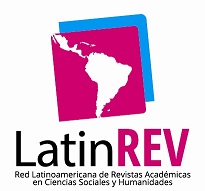Invaluable life experience must be passed on to generations! And after all, it’s not necessary, as turned out, todevour own brethren for this purpose!
DOI:
https://doi.org/10.11606/issn.2447-2158.i18p29-40Keywords:
Memory transfer, The existencial memory, Law os exponencial growth of anti-aging costs, biochemical encoding of memoryAbstract
This author's work briefly summarizes most of currently available world practice on memory transplantation from adult to embryo. For, as shown by the experiments, nowdays precisely it is the only, in principle, effective way to gain the immortality so desired by many. And if, moreover, we take into account that the fetus itself also affects the neurons implanted from the outside in a rejuvenating way, it becomes clear that such a relaying of memory from generation to generation, in fact, does not know any foreseeable boundaries! Although, on the other hand, it is no secret to anyone that a lot will here depend on the exact determination of the sojourn point of the individual "Self" too.
Downloads
References
ASLANIDI, Konstantin B. Pamyat' planarij kak model' pamyati cheloveka [Planarian memory as a model of human memory]. Uspehi fiziologicheskih nauk [Advances in physiological sciences]. V. 50, № 2, 2019, el. access link: https://sciencejournals.ru/view-article/?j=uspfiz&y=2019&v=50&n=2&a=UspFiz1902005Aslanidi (in Russ.)
ASHURSKY, Emir E. Illyuzii transgumanizma (interv'ju s akad. Vitaliem Kordyumom [Illusions of transhumanism (interview with Acad. Vitaly Kordyum). Priroda i chelovek [Nature & Man] №2, 2008, el. access link: http://transhumanism-russia.ru/content/view/309/116 (in Russ.)
ASHURSKY, Emir E. Ego sentio, ergo sum! Science and education - №8, 2021, el. access link: http://paper.researchbib.com/view/paper/331253
ASHURSKY, Emir E. K potajonnym glubinam individual’nogo coznanija [To secret profundities of individual consciousness]. Grani epohi [Facets of epoch], №3 – 2023, el. access link: http://www.facets.ru/index.htm?article=9513 (in Russ.)
BLOCK, Richard A. & McCONNELL, James V. Classically conditioned discrimination in the planarian. Nature, 30th Sep., 1967
DUHAIME-ROSS, Arielle. Flatworms recall familiar environs, even after losing their heads. Scientific American, October of 2013
KUROLENKO, Natalya I. Na puti k bessmertiju [On the way to immortality]. Priroda i chelovek [Nature & Man] №9, 2009 (in Russ.)
McCONNELL, James V. A manual of psychological experimentation on planarians. Journal of Biological Psychology - № 5-7, 1965, el. access link: https://ase.tufts.edu/biology/labs/levin/resources/documents/PlanarianManual.pdf
MIKULAS, William L. (ed.) Physiology of Learning /chapter 2/ (1977) Chicago: Nelson-Hall, el. access link: http://uwf.edu/wmikulas/Webpage/concept/chaptertwo.htm
SHEYMAN, Inna M. & TIRAS, Harlampy P. Vlijanie hoda regeneratsii ganglija na obuchenie planarij [Effect of ganglion regeneration on planarian learning]. Ontogenez [Ontogenesis]. Vol. 12, № 4, 1981 (in Russ.)
SHEYMAN, Inna M. Reguljatory morfogeneza i ih adaptivnaja rol' [Regulators of morphogenesis and their adaptive role] (1984), Moscow: Nauka (in Russ.)
SHEYMAN, Inna M. & TIRAS, Harlampy P. & BALOBANOVA, Ella F. Morfogeneticheskaja funkcija nejropeptidov [Morphogenetic function of neuropeptides] Fiziologicheskij zhurnal im. Sechenova [Sechenov Physiological Journal]. Vol.75, No.5, 1989 (in Russ.)
SHEYMAN, Inna M. & KRESHCHENKO, Natalia D. Regeneratsija planarij: eksperimental'nyj ob#ekt [Regeneration of planarians: experimental object] Ontogenez [Ontogenesis]. Vol. 46, No 1, 2015, el. access link: https://naukarus.com/regeneratsiya-planariy-eksperimentalnyy-obekt (in Russ.)
STERN, Larry. The memory-transfer episode. Time Capsule. Vol 41, No. 6, June of 2010, el. access link: https://www.apa.org/monitor/2010/06/memory-transfer
TIRAS, Harlampy P. & SHEYMAN, Inna M. Himicheskie faktory – regulyatory morfogeneza planarij [Chemical factors - regulators of planarian morphogenesis]. Ontogenez [Ontogenesis]. Vol. 15, № 4, 1984 (in Russ.)
TUSHMALOVA, Nina A. Sravnitel'no-fiziologicheskoe issledovanie ul'trastrukturnyh aspektov pamjati [Comparatively-physiological study of ultrastructural aspects of memory] (1986), Moscow: Nauka. 147 pgs. (in Russ.)
TUSHMALOVA, Nina A. Behavior of nerveless organisms. Moscow University’s Biological science bulletin, vol.53, N4, 1998
UNGAR, George (ed.). Molecular mechanisms in memory and learning (1970), New York: Plenum Press
UNGAR, George & UNGAR, Allan L. & MALIN, David H. & SARANTAKIS, Dimitry. Brain peptides with opiate antagonist action: their possible role in tolerance and dependence. Psychoneuroendocrinology. Vol. 2, Iss. 1, 1977, el. access link: https://www.sciencedirect.com/science/article/abs/pii/0306453077900269
VERTES, Alain & QUERSHI, Nasib & CAPLAN, Arnold I. Stem Cells in Regenerative Medicine (2015), New York: John Wiley & Sons, 676 pgs.
Downloads
Published
Issue
Section
License
Copyright (c) 2025 Emir Ashursky

This work is licensed under a Creative Commons Attribution-NonCommercial 4.0 International License.
Authors who publish in this journal agree to the following terms:
- Authors retain the copyright and grant the journal the right to first publication, with the work simultaneously licensed under the Creative Commons Attribution License in the "Attribution-NonCommercial 4.0 International" (CC BY-NC 4.0) modality that allows sharing of the work with acknowledgment of authorship and initial publication in this magazine.
- Authors are authorized to assume additional contracts separately, for non-exclusive distribution of the version of the work published in this journal (eg, publishing in institutional repository or as a book chapter), with acknowledgment of authorship and initial publication in this journal.
- Authors are allowed and encouraged to publish and distribute their work online (eg in institutional repositories or on their personal page) at any point before or during the editorial process, as this can generate productive changes, as well as increase impact and citation of the published work (See The Effect of Open Access).
- Any doubts or complaints about copyright must be directed to the Editorial Board or qualify and express themselves in accordance with the guidelines of the Committee on Publications Ethics (COPE).





